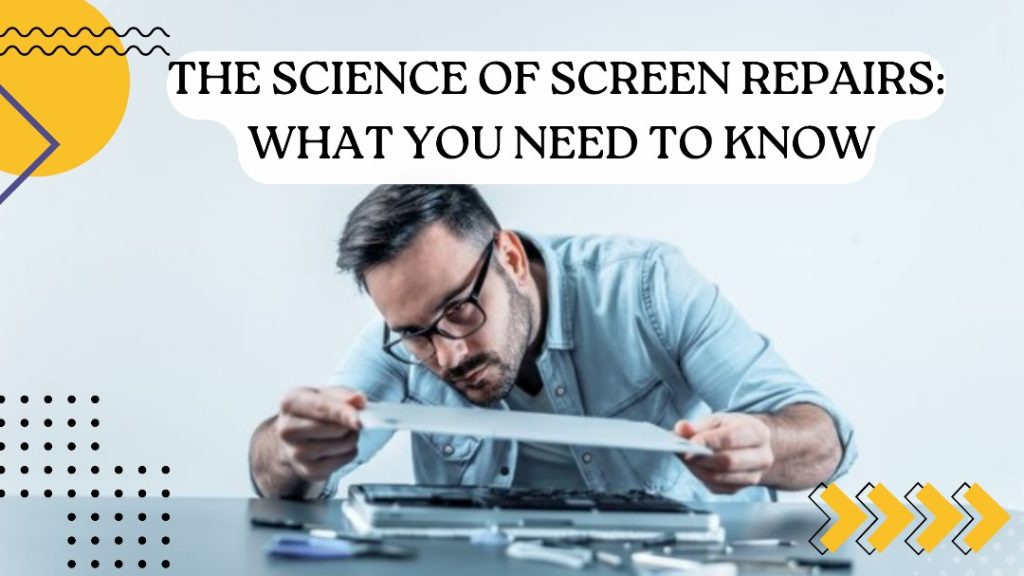
In today’s digital world, our smartphones and tablets such as Samsung and iPhone devices, are vital for staying connected and getting things done. But, like anything else, they can get damaged, especially their screens. Fixing a cracked screen isn’t just about swapping out the glass. It’s a detailed process that needs a good grasp of how screens work and what they’re made of.
In this article, we’ll dive into the ins and outs of screen repairs, from the types of screens to common damages, repair methods, and tips for picking the right repair service.
Understanding Screen Technologies:
1. LCD vs. OLED:
Smartphones and tablets typically use two main types of screens: LCD (Liquid Crystal Display) and OLED (Organic Light-Emitting Diode). LCD screens depend on a backlight to light up the pixels, whereas OLED screens generate their own light, leading to richer blacks and improved contrast. Knowing which type of screen your device has is essential because it affects the repair process and cost.
2. Touchscreen Technology:
Many modern screens feature touchscreen technology, enabling users to interact with their devices via touch. Capacitive touchscreens detect touch using electrical signals, while resistive touchscreens rely on pressure sensors. When the touchscreen layer is damaged, specialized repair techniques are necessary to ensure it functions properly.
Common Screen Damages:

1. Cracks and Shatters:
Cracked and shattered screens are some of the most common types of damage, usually caused by accidental drops or impacts. The severity of these damages can vary, ranging from minor cracks to extensive shattering that affects the screen’s functionality.
2. Dead Pixels:
Dead pixels refer to individual pixels on the screen that fail to illuminate, resulting in small black spots. While they are frequently attributed to manufacturing defects, dead pixels can also occur due to physical damage or prolonged use.
3. Water Damage:
Water or moisture exposure can harm the screen’s internal components, causing discoloration, flickering, or complete malfunction. Prompt attention is necessary for water damage to prevent further deterioration of the screen and other internal components.
Repair Techniques:
1. Screen Replacement:
Replacing a screen involves removing the damaged one and installing a new, working screen. This requires precision and expertise to ensure proper alignment and functionality. Skilled technicians carefully handle each step, ensuring a smooth transition that leaves your device with a clear display.
With Screen Fixed active involvement in this process, you can rest assured that your screen not only looks good but also functions flawlessly, providing you with an enhanced and satisfying user experience.
2. Digitizer Replacement:
When the touchscreen layer gets damaged, replacing the digitizer is needed. This involves removing the damaged digitizer and installing a new one to restore touch functionality. Skilled technicians manage this task, carefully removing the old digitizer and installing the new one to ensure seamless touch responsiveness. Their expertise ensures that your device regains its full touch capabilities, letting you navigate and interact with ease.
3. Liquid Damage Repair:
Liquid damage repair entails thorough cleaning and drying of internal components to eliminate moisture and prevent corrosion. Specialized equipment and techniques are employed to diagnose and address liquid damage effectively.
Factors to Consider When Selecting a Repair Service:
1. Expertise and Experience:
When searching for repair services, prioritize those with a demonstrated history of expertise and experience in handling screen repairs customized to your device’s particular make and model. This ensures that technicians are well-versed in your device’s intricacies, leading to more precise and effective repairs. By entrusting your device to skilled professionals with a history of success in repairing similar devices, you can have confidence in the quality of their work and the longevity of your device’s screen.
2. Quality of Parts:
Ensure that the repair service utilizes replacement parts of high quality that meet or surpass the original specifications for durability and performance. This ensures that your device maintains its optimal functionality and longevity after the repair.
By utilizing premium replacement parts, the repair service can make sure that your device operates at its best, providing you with a reliable and satisfactory user experience.
3. Warranty and Guarantee:
Selecting a repair service that offers a warranty or guarantee on their workmanship and replacement parts is crucial for peace of mind and protection against future issues. This ensures that if any problems occur after the repair, you can have them resolved without experiencing additional costs or facing unnecessary hassles. It’s a smart investment that provides assurance and confidence in the quality of the repair service.
Conclusion:
Screen repairs go beyond simply replacing broken glass; they require a deep understanding of screen technologies, common damages, and repair techniques. By grasping the science behind screen repairs and selecting a trustworthy repair service, you can ensure your device is restored to its best condition. This ensures you can continue enjoying its functionality and convenience without any worries.

![Download Insta Pro Apk Latest [v9.90 Version Updated 2024] Sam Mods Download Insta Pro Apk Latest [v9.90 Version Updated 2024] Sam Mods](https://www.hdmovieshub.us/wp-content/uploads/2024/01/IMG-20240119-WA0004-370x297.jpg)



